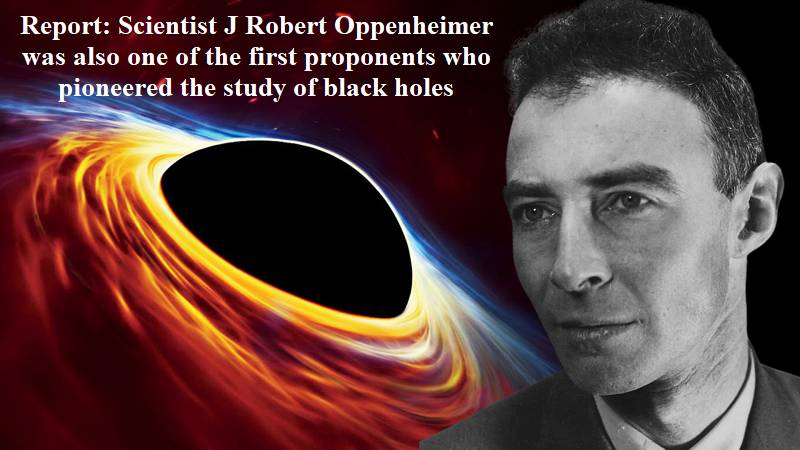
Scientist J. Robert Oppenheimer, renowned for his involvement in the creation of the atomic bomb and now gaining cinematic recognition in Christopher Nolan’s film “Oppenheimer,” could also be credited as one of the early pioneers in the study of black holes.
In 1939, Oppenheimer and his colleague Hartland S. Snyder from the University of California Berkeley published a groundbreaking paper titled “On Continued Gravitational Contraction.” This paper utilized equations from Albert Einstein’s general theory of relativity and gravity to elucidate the concept of black hole formation.
Xavier Calmet, a physics professor at the University of Sussex in England, explained that Oppenheimer’s proposal was the first collapse model describing how a star could transform into a black hole. This model, representing the final stage in the evolution of massive stars, is still employed today and was recently used in a paper by Calmet that considers quantum gravity in the collapse of black holes.
The significance of this model lies in its analytical solvability, allowing the equations to be worked out using pen and paper without the need for numerical computations. Despite its apparent simplicity, the model adequately describes many aspects of a collapsing star’s behavior.
During the time Oppenheimer and Snyder were developing their paper based on Einstein’s 1915 theory of general relativity, the latter was attempting to prove the non-existence of black holes. Nevertheless, Oppenheimer and his colleagues are now recognized as the first scientists to truly comprehend the physical birth of black holes.
Despite achieving fame and recognition for his work on atomic bombs at Los Alamos, Oppenheimer’s contributions to black hole physics and astrophysics are also highly regarded within the scientific community. While the public may associate his name primarily with the bomb and the Manhattan Project, his impact on physics remains enduring and influential. He is considered one of the leading physicists of his time, and his seminal work continues to hold relevance in current scientific research.

Post Your Comments